- Joined
- Jun 23, 2011
- Messages
- 786
I may have posted or alluded to bits and pieces of this project over the past year. Tonight I completely finished it (although I've been using it for months).
This project is an improved 5C collet closer for my Grizzly G4003 lathe. My original design lacked a thrust bearings for the handwheel so it wasn't the smoothest in the world. Also, the collet holder was a basically a 5C to MT5 adapter. I hated having to tap the taper out: So much so that I would just use the chuck when I should have been using the collets.
So, a change of thought was needed:
First order of business: have a 5C chuck that could use the camlock arrangement on my lathe. So to the drawing board... Here's the 3D model (designed using Alibre 2012 PE) and a drawing of the camlock pin (in case someone wants to make some for another reason). The holes around the perimeter are used for a pin wrench so I can really sock down the handwheel if I need to without rotaing the spindle.
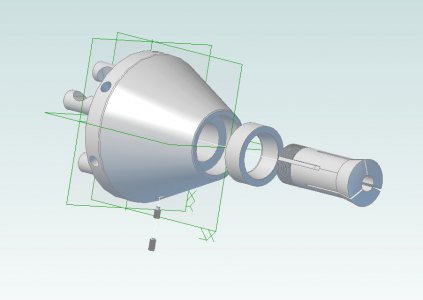
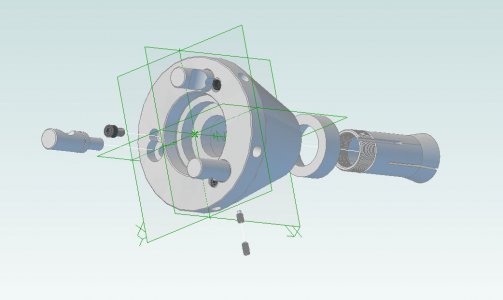
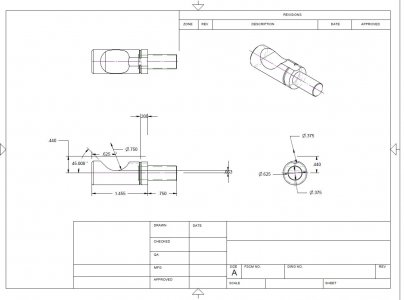
Somewhere I have pictures of the chuck being machined, but they're on a SD card somewhere on this desk... So, here's a textual play by play:
-------A lot of machining, chips, and cursing ---------
At last a finished chuck...
The second order of business was to get a thrust bearing in there... I kept only the handwheel and the collet thread eand of the closer. I made a new outboard end with an internal thrust bearing and a longer drawbar for the chuck. The bearing sits down in a bore with a sort of single stepped labyrinth to shield the bearing from dust and debris.
Here it is all done:
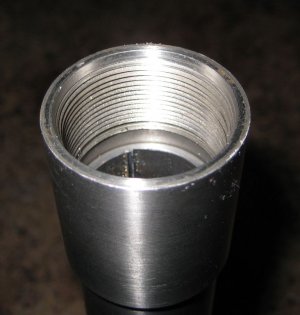
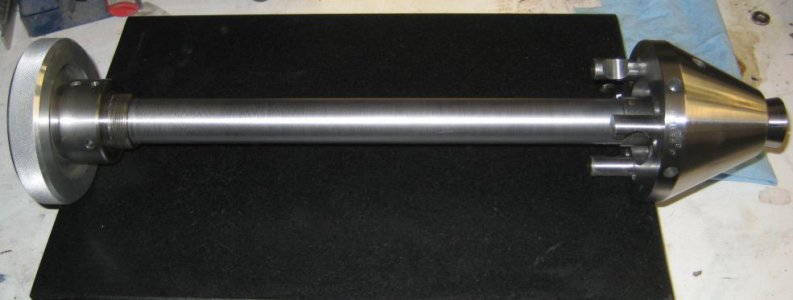
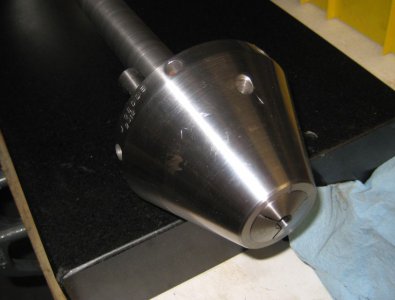
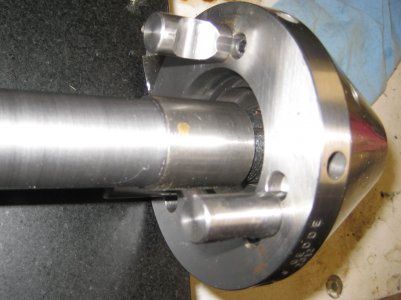
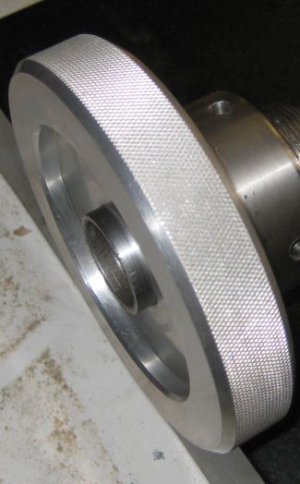
There is a hardened insert pressed into the end of the chuck end as a wear surface. This was skim turned with the chuck installed using the camlock pins to eliminate runout. A toolpost grinder would have yielded a slightly better finish but I don't have one. I used a sharp DCGT carbide insert to skim the hardened insert and got a fairly good finish.
After several months of use I can say that I see consistent 0.0001 or better repeatability on the chuck's 5C taper whenever the chuck is reinstalled as long as I install it the same way each time (assured by lining up a witness mark). If I want zero TIR, I can get there by retightening the camlocks... I checked it for many chuck installs after it was built to gain a trust in it. I don't check it anymore unless it's really critical. I really am impressed at how well the camlock system works in general...
The net result is since the 5C taper and bore was final cut on the lathe for which it will be used, any runout in the lathe itself (about 0.00015) is compensated for. So the only runout I have when I use this is the miniscule, non-once around, TIR you get as the balls in the headstock bearings make one full cycle through the race. There is something semi-periodic there but I can't measure it with my tenth indicator.
John








This project is an improved 5C collet closer for my Grizzly G4003 lathe. My original design lacked a thrust bearings for the handwheel so it wasn't the smoothest in the world. Also, the collet holder was a basically a 5C to MT5 adapter. I hated having to tap the taper out: So much so that I would just use the chuck when I should have been using the collets.
So, a change of thought was needed:
First order of business: have a 5C chuck that could use the camlock arrangement on my lathe. So to the drawing board... Here's the 3D model (designed using Alibre 2012 PE) and a drawing of the camlock pin (in case someone wants to make some for another reason). The holes around the perimeter are used for a pin wrench so I can really sock down the handwheel if I need to without rotaing the spindle.



Somewhere I have pictures of the chuck being machined, but they're on a SD card somewhere on this desk... So, here's a textual play by play:
-------A lot of machining, chips, and cursing ---------
At last a finished chuck...
The second order of business was to get a thrust bearing in there... I kept only the handwheel and the collet thread eand of the closer. I made a new outboard end with an internal thrust bearing and a longer drawbar for the chuck. The bearing sits down in a bore with a sort of single stepped labyrinth to shield the bearing from dust and debris.
Here it is all done:





There is a hardened insert pressed into the end of the chuck end as a wear surface. This was skim turned with the chuck installed using the camlock pins to eliminate runout. A toolpost grinder would have yielded a slightly better finish but I don't have one. I used a sharp DCGT carbide insert to skim the hardened insert and got a fairly good finish.
After several months of use I can say that I see consistent 0.0001 or better repeatability on the chuck's 5C taper whenever the chuck is reinstalled as long as I install it the same way each time (assured by lining up a witness mark). If I want zero TIR, I can get there by retightening the camlocks... I checked it for many chuck installs after it was built to gain a trust in it. I don't check it anymore unless it's really critical. I really am impressed at how well the camlock system works in general...
The net result is since the 5C taper and bore was final cut on the lathe for which it will be used, any runout in the lathe itself (about 0.00015) is compensated for. So the only runout I have when I use this is the miniscule, non-once around, TIR you get as the balls in the headstock bearings make one full cycle through the race. There is something semi-periodic there but I can't measure it with my tenth indicator.
John








